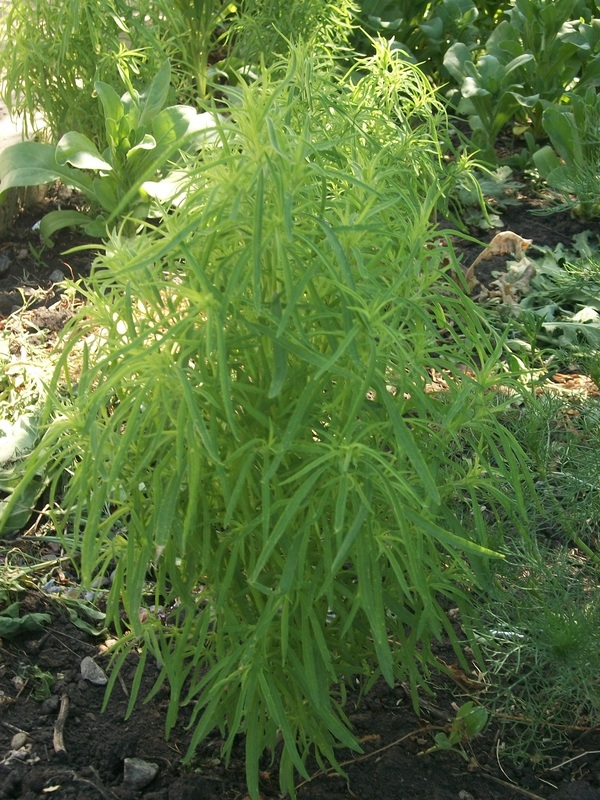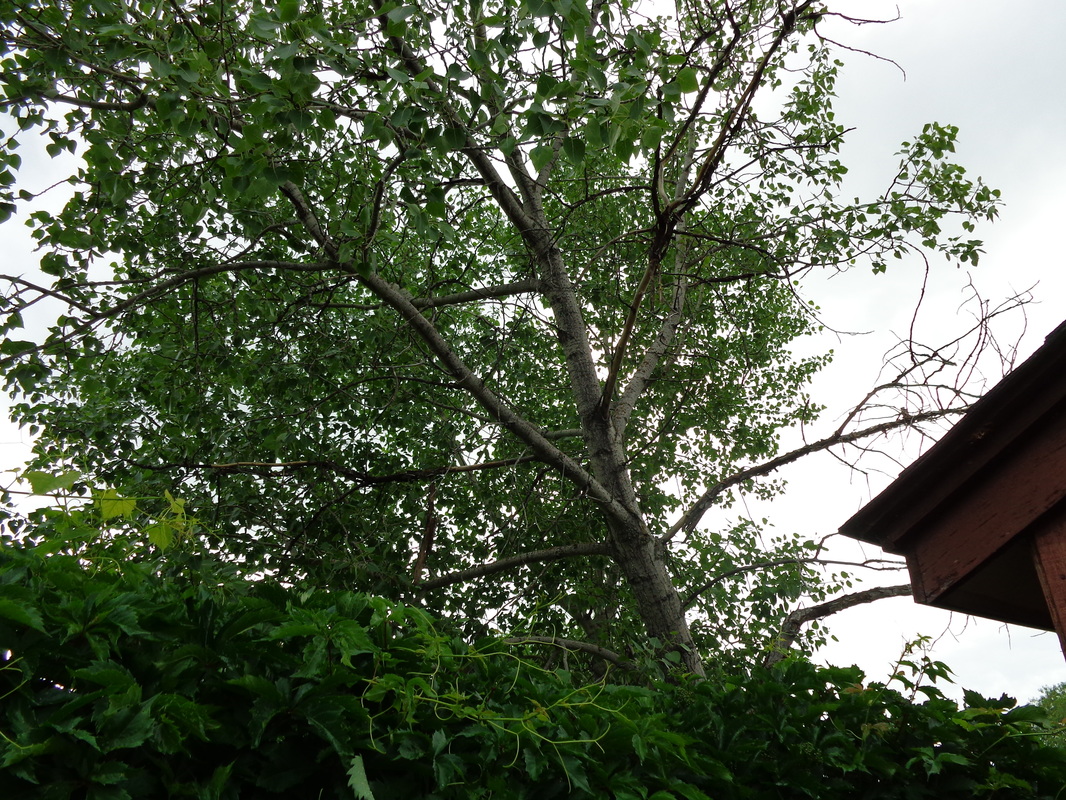|
Today I noticed that a poplar tree in the park just north of my property line had several dead branches on it. A storm with tornado like winds had uprooted that tree many years ago and it has remained leaning over our shed ever since, looking as thought it might topple over. I thought that I must phone the City of Winnipeg municipal office to have that tree removed. I turned to check our garden. The Haskap berries were already harvested and eaten. Our Evans Cherry trees were heavily laden with cherries but not yet ripe.
Then I heard a repeated rat a tat tat. Over and over again coming from the poplar tree. I turned around to look and there was a small grey and white bird hammering away on one of those dead limbs. It had a flat head and long beak and I watched it hammer away. It is my first time seeing a woodpecker and I was mesmerized. Watching that bird obtain its food...I realized that there must be insects in that rotting wood. And I was wanting to have that food source removed. The bird that could help stop the spread of the emerald borer as well as other borer insects. Surely that bird a messenger from the creator of all life. To remind me of the importance of those dead branches in the web of life. To remind me as well of my ignorance of nature’s ways and of my place. The City will come to remove that tree when a worker notices its lifeless branches. But I will not call. By rights, that tree should fall and be a feast for insects, birds and fungi and return to earth with its nutrients to provide food for a myriad of life and to enrich the soil. Thank you woodpecker for your lesson! You have reminded me to be humble in my relationship with nature. May we all learn to live in harmony with you, for that is truly our only hope for a future on this planet
0 Comments
 Kochia Bassia scoparia by Jackie Braga “What is a Weed? A weed is a plant whose virtues have never been discovered.” Ralph Waldo Emerson Kochia is an herbaceous plant that has naturalized in America from Eurasia. Around 1900 In the USA this plant was introduced as an ornamental. It is drought and insect resistant. It is able to grow in very poor even salty soils. The plant now grows throughout much of Canada and the U.S. Prior to maturity and seed production (less than 18 inches tall) kochia has good forage value and results in good livestock performance. Unfortunately when the plants are drought stressed, nitrate toxicity may occur. Also as the plants approach maturity marked toxicity to animals that ingest Kochia can occur. The seed head is the most toxic part of the plant containing high levels of oxalates and saponins. Oxalates absorb into the livestock’s circulation and bind with calcium to form insoluble calcium oxalate. If consumed rapidly and in very high quantities, it can lead to hypocalcemia, liver and kidney failure resulting in death to the livestock. According to the Alternative Field Crops Manual, published by Wisconsin and Minnesota Extension, livestock should not graze kochia for more than 90-120 days to prevent oxalate toxicity. Rotational grazing with non kochia-infested pastures can also help prevent potential toxicity. Medicinal uses of both leaves and seeds include antibacterial, antifungal, anti-inflammatory, anti-neoplastic (anti-cancer), astringent, cardio tonic, and diuretic properties. Uses include heart, kidney, gastrointestinal, urinary tract, and dermatological applications. However toxicity as noted above can occur with use. Because kochia is an annual plant, as long as it does not set seed, it will not propagate. Even when Kochi does produce seed, the seed is short lived and performs poorly with competition. The conditions when Kochi is successful are where most other plants are unable to grow, such as high salinity, alkaline soils and in drought. We need to be much more educated and savvy in our approach to reducing and eradicating unwanted plants. Especially plants like Kochia, where although it does produce abundant seed, and has a tumble weed method of seed dispersal allowing it to spread, it really is an indicator plant of poor soil conditions and poor farm management. And Kochia is resistant to many herbicides requiring the use very toxic, long-lasting and multiple herbicides. Application of poisons for control of unwanted plants causes many problems such as a) Damaging non target plants so as to decrease biodiversity and especially to affect seed production of non-target plants. b) Damaging agricultural land by harming beneficial insect species, soil microorganisms, and worms which are responsible for soil fertility and which naturally limit pest populations and maintain soil health. c) Exposing people to increased health risks such as increased leukemia and lymphoma cancer rates in farmers or increased autism spectrum disorder rates in the children of women exposed to organophosphates. If we really care about the long term future of the fertility of our soil, our ecosystem, our health and our children's health, we need to use solutions to our pest and weed problems that are nontoxic. We need to change our cultural methods of agriculture and not pull the pesticide/herbicide trigger. Kochia is classified as noxious or invasive, but why not see Kochia as an ally - a wild plant that can be used as food, fodder and medicine. Photo Attribution By WildBoar (Own work) [Public domain], <a href="https://commons.wikimedia.org/wiki/File%3AKochia_scoparia_01.JPG">via Wikimedia Commons</a> (1)http://www.umanitoba.ca/faculties/afs/MAC_proceedings/2003/pdf/murray_kochia.pdf (2)http://www2.mst.dk/Udgiv/publications/2012/06/978-87-92779-53-3.pdf (3)http://www.toxicsaction.org/problems-and-solutions/pesticides |
CategoriesAuthorManitoba is where I was born and where I have spent most of the five and one half decades of my life. I lived on the outskirts of the town of Portage La Prairie at a time when tadpoles and frogs inhabited the ditches and ponds, when there were many Monarch butterflies each summer along with dragon flies and grasshoppers. Redwing blackbirds perched the cattails of the ditches. As children we picked dandelions for bouquets and made wishes before blowing dandelion seed heads. We searched clover for lucky four leaves and rolled on the grass…there was no concern of poisonous herbicides. The grass was thick. Wherever we dug…there were earthworms Archives
September 2015
|
Photo used under Creative Commons from wackybadger

 RSS Feed
RSS Feed
